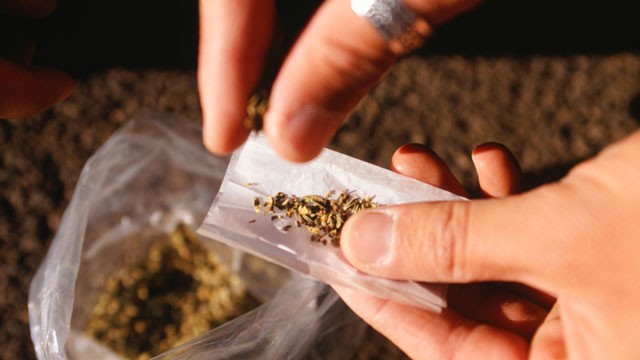“For decades, Colombia has been searching for ways to treat people who are addicted to basuco, the nation’s version of crack cocaine. Now, the country’s capital, Bogota, is considering a new approach: transition users to marijuana.
BBC Mundo reports that the city is interested in trying a pilot program to see if pot helps mitigate the symptoms of withdrawal that basuco users experience. The goal is to minimize the social and health risks that accompany the drug.
Basuco isn’t the same as crack, but it’s an apt comparison. Like crack, it’s smokable and more common among a poorer segment of society.
When it comes to quality, basuco is some of the least pure cocaine out there. The base of the drug is an intermediary product that you get if you’re turning coca leaves into cocaine, and it can contain residue from the solvents used in that process, including kerosene. Dealers add things like ash and crushed bricks to give it bulk. For less than a dollar, you can get a short but powerful high.”

Doug Menuez/Getty Images
“The mayor’s office in Bogota is considering a pilot program that would look to transition drug addicts from hard drugs to marijuana.”
“One expert in Bogota estimates that the city has at least 7,000 “problem users,” which means they might take up to 15-20 hits a day, according to BBC Mundo.
To confront the issue, the city is planning to test out “controlled consumption centers,” where addicts of hard drugs will be able to consume in a safer environment, with the goal of kicking the habit.
Julián Quintero, from the Bogota-based non-profit organization Acción Técnica Social, which works on drug policy, told BBC Mundo how such centers will work:
“The first thing you do is to start to reduce the dose. After that, you begin to change the way that it’s administered: if you were injecting heroin, you move to smoking heroin; after smoking heroin, you move to combining it with cannabis; after that, you’re staying with the cannabis,” he said. “What you’re looking for is for the person to reach a point where they can stabilize the consumption and that the consumption doesn’t prevent them from being functional.”
Is anyone in the U.S. trying this kind of approach to hard drugs?
No, according to Amanda Reiman, a policy manager with the Drug Policy Alliance, a group that favors alternatives to current drug laws.
“Unfortunately, universities rely on grants from the federal government for research, so most of what they do is what the feds want done,” she said in an email. “As you can probably guess, the feds are not too interested in beneficial uses for marijuana, and even less interested in how to help people who are addicted to substances, so most of the research in this area occurs outside the U.S. or through private funding.””
http://abcnews.go.com/ABC_Univision/News/fighting-drug-addiction-marijuana/story?id=18851710






